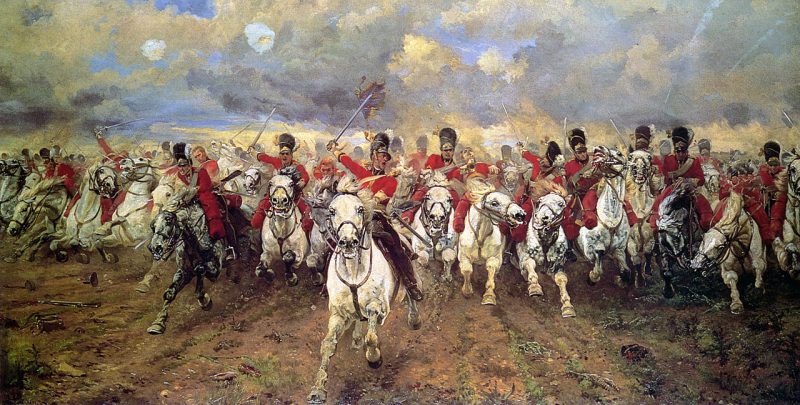Ponsonby was subsequently killed and his sword was taken, which was then used to kill three soldiers from his rescue party.
The Royal Scots Greys were formed in the early 17th Century from the joining of three Scottish Dragoons regiments. Although they were a cavalry unit, they carried weapons similar to those used by infantry soldiers, including matchlock muskets, halberds, and pistols.
The origin of the name is unclear. Some claim that the name comes from the grey coats that were part of their original uniform. However, there is another theory that the name comes from the color of their horses. Although a 1693 inspection observed that they rode grey horses, this may simply have been down to the availability of grey horses.
Army units were reorganized following the 1707 Act of Union between Scotland and England. The Royal Scots Greys were renamed as the North British Dragoons. By this point, their grey coats had been replaced by scarlet colored coats. Despite the change of color and further name changes over time, they continued to be known as the Scots Greys.
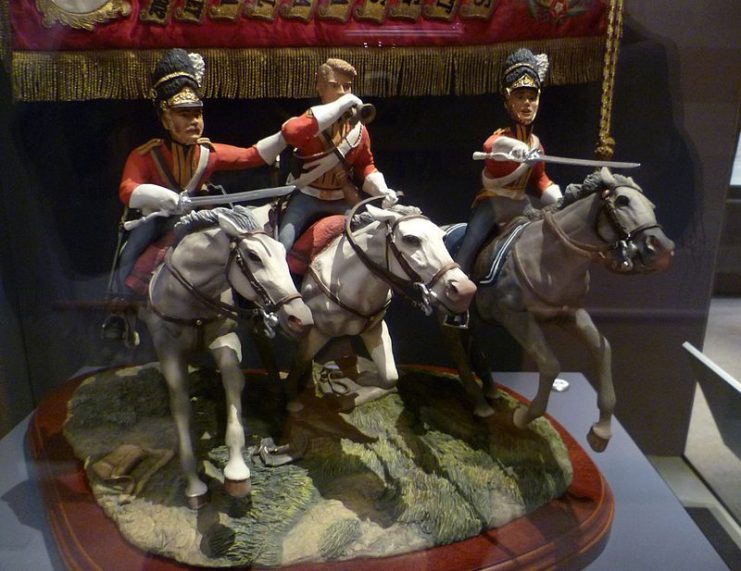
The regiments was active at home and abroad. They took part in the War of Spanish Succession and were based in Scotland during the Jacobite Rebellion. Their next major overseas campaign was the War of Austrian Succession. The Greys returned to action during the Napoleonic Wars and played a significant role at the Battle of Waterloo.
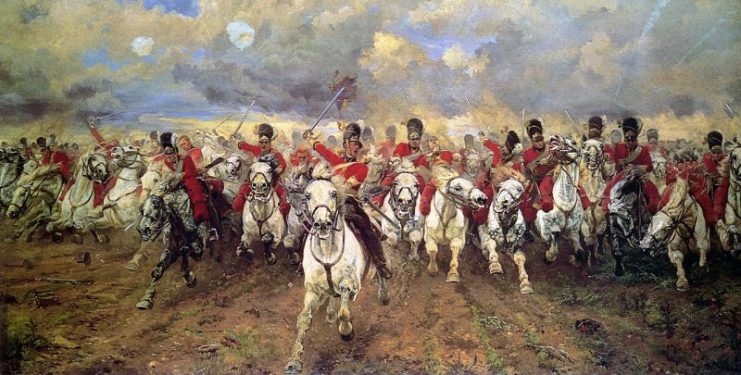
Waterloo
The Scots Greys had undergone many changes by Waterloo. They had become more like conventional cavalry rather than mounted infantry as they had originally been. Additionally, their numbers had diminished over time, but all this changed when they were sent to fight in the Napoleonic Wars and received new recruits. By the time they joined Wellington’s forces against Napoleon, the regiment totaled 946 men.
In June 1815 the Greys were sent to Ghent and were soon on their way to take part in the Battle of Quatre Bras in the southern Belgium province of Wallonia. This was a significant battle that was a preliminary battle to Waterloo, the most significant battle of the Napoleonic Wars.
Yet after traveling for more than fifty miles, they were unable to participate in the battle, and by the time they arrived the French soldiers had fallen back in a temporary retreat.
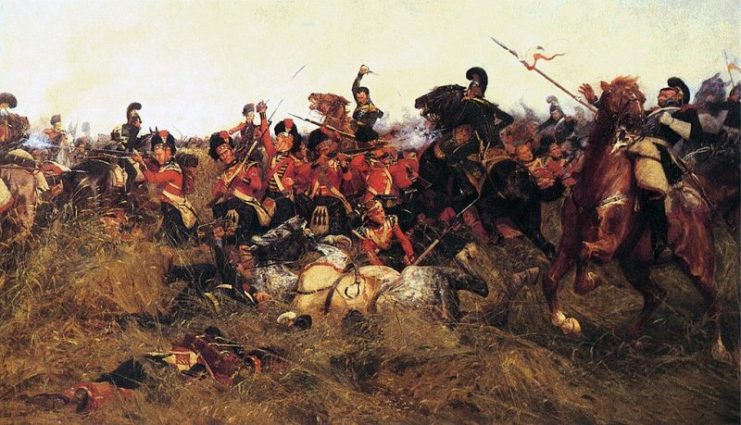
On the June 18th, 1815, the Scots Greys were ready for action for the Battle of Waterloo under the command of the Earl of Uxbridge. They formed part of the third line of Wellington’s troops on the left flank. The regiment was originally held back as a reserve to shore up the Household and Union Brigades that were sent ahead to fight the French armies.
The conditions were difficult; crop cultivation had made the ground uneven and the mud made everything even worse. It wasn’t long before reinforcements were required, but in those conditions they could only walk their horses at a slow pace. At that pace there was no possibility of making a charge.
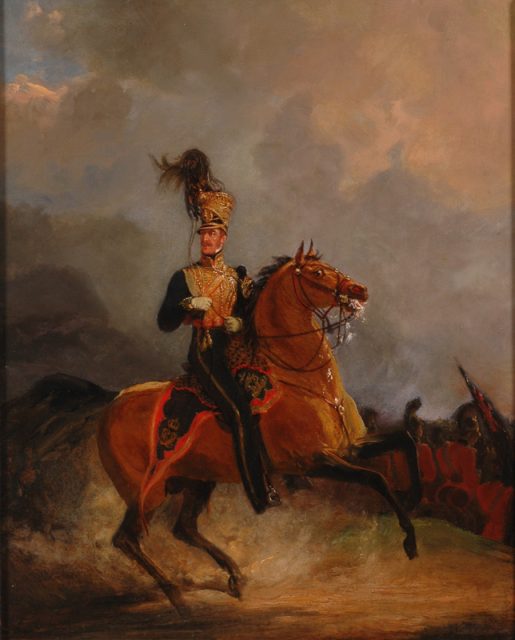
Nonetheless, they successfully managed to push their way through and break into the middle of the French army and caused many casualties among the French troops.
One of the high points in the battle for the regiment was when Sergeant Charles Ewart succeeded in capturing the eagle mascot of the 45e Régiment de Ligne. Sergeant Ewart fought his way through to the mascot despite through a heavy melee. Sergeant Ewart was accordingly rewarded with a promotion to the rank of Ensign.
A significant problem of the battle appears to have been the serious lack of organization. Attempts were made to reorganize the British troops but they were not very successful and the battle continued nevertheless.
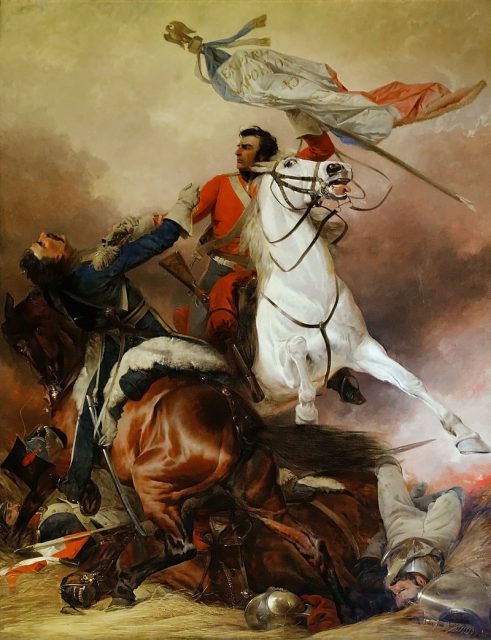
The Scots Greys continued attacking the French columns as best they could under the circumstances. Fortunately, they were soon able to increase their speed from a walking pace to a gallop. The speed increase allowed them to approach the battlefield much more effectively, but they suffered numerous casualties from heavy musket fire.
The Greys received a serious blow after a surprise attack by French Cuirassiers. Shortly after this attack, regimental commander Major-General William Ponsonby was captured. Members of the Greys attempted to rescue him but they were unsuccessful. Ponsonby was subsequently killed and his sword was taken, which was then used to kill three soldiers from his rescue party.
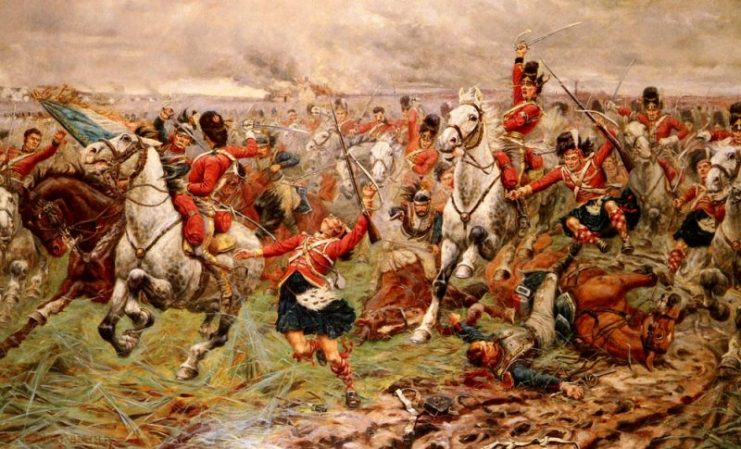
As the fighting continued the Greys had little choice but to retreat. They had suffered heavy losses and casualties which had left 104 of their men dead and a further 97 wounded. In addition, the battle killed 228 of the regiment’s 416 horses.
Yet their participation in the battle was not over, and what was left of the regiment was reformed to provide carbine fire to assist their comrades. When final victory was declared, the Greys then pursued the French army and kept up the chase until Napoleon was finally forced to surrender.
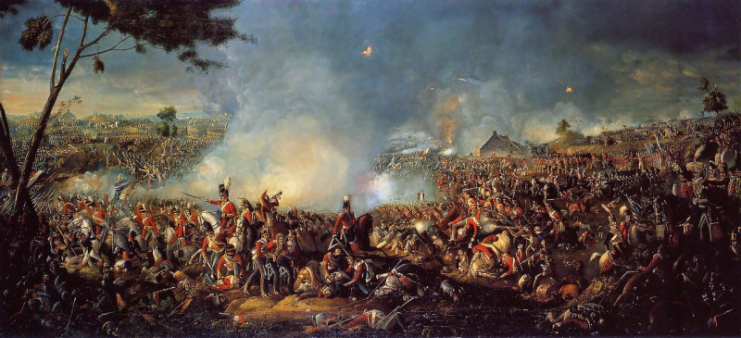
Read another story from us: The Battle of Waterloo and the Final Downfall of Napoleon
After Waterloo
They regiment remained in Europe until 1816 as part of a peacekeeping force.
The Greys retained their unique identity and continued fighting into the 20th Century. In 1971 they formed the Royal Scots Dragoon Guard by amalgamating with the 3rd Carabiniers.
If you want to know more about their history, you can visit the Scots Dragoon Museum in Edinburgh Castle.
